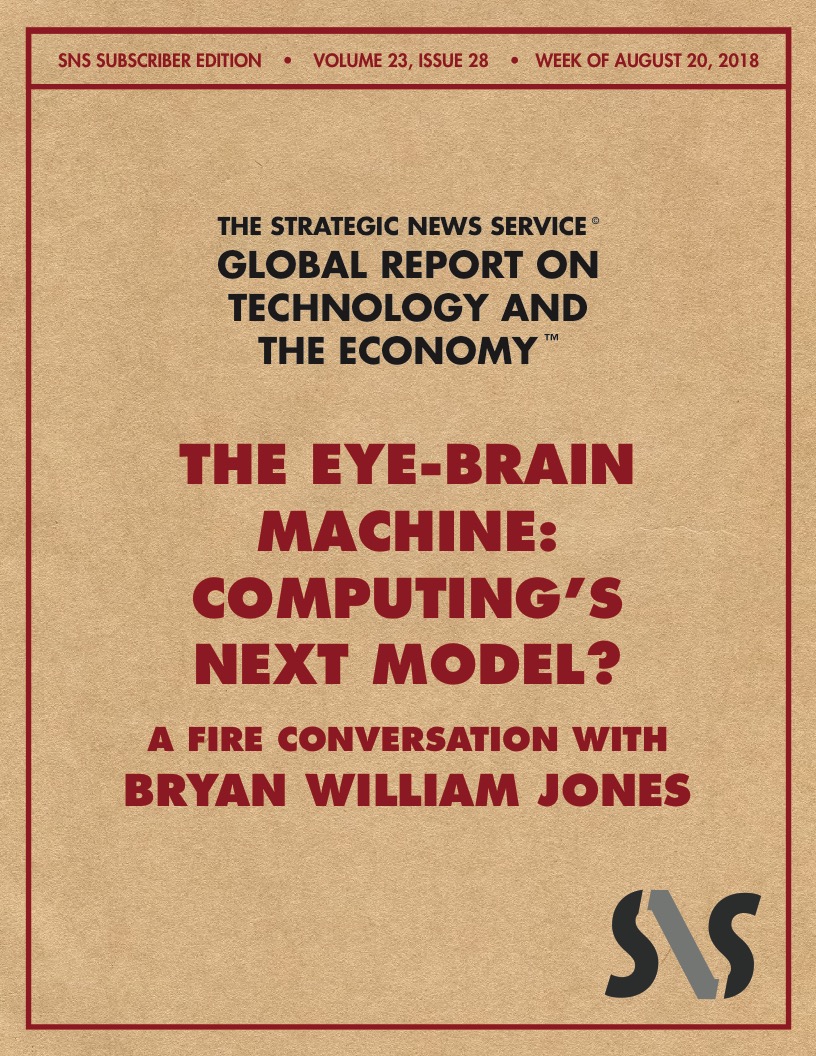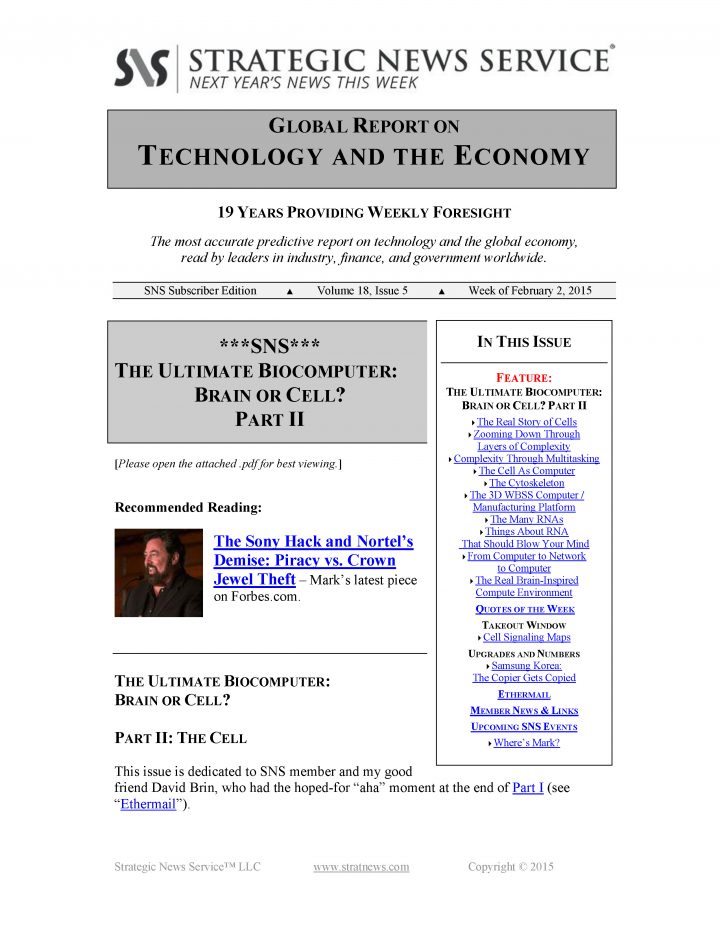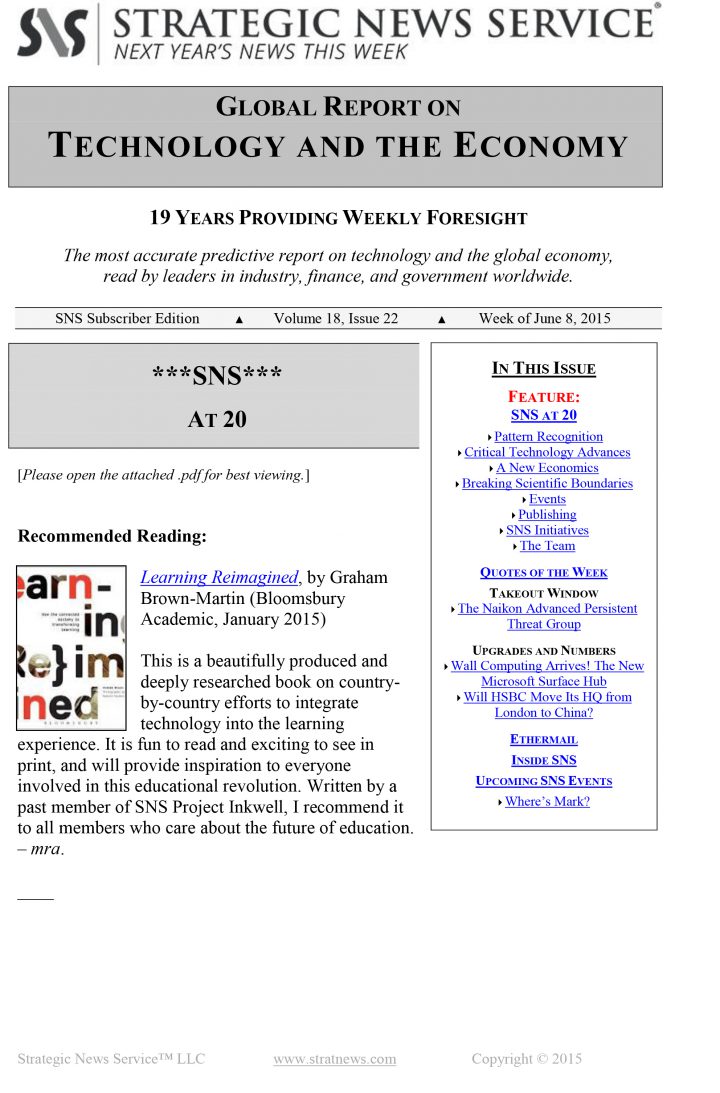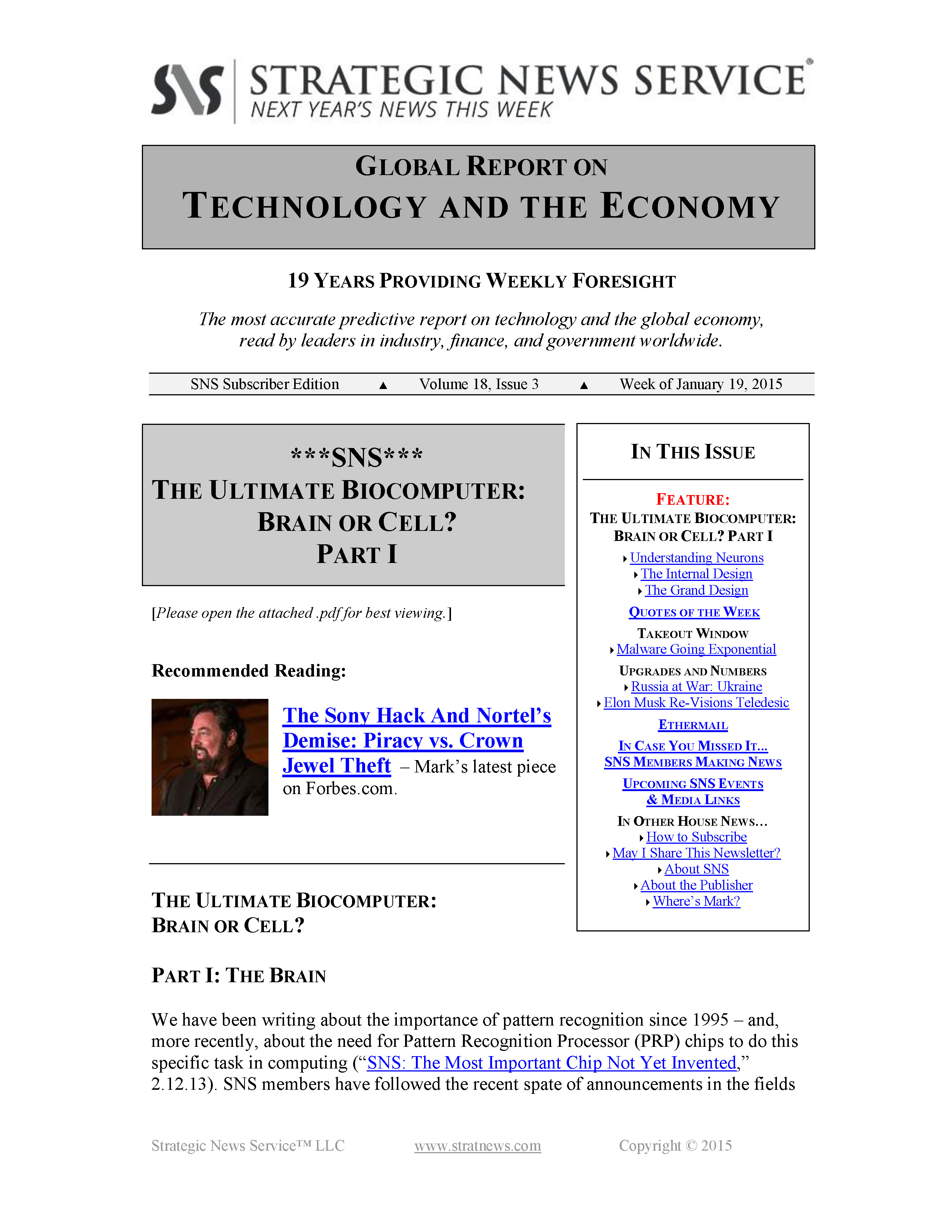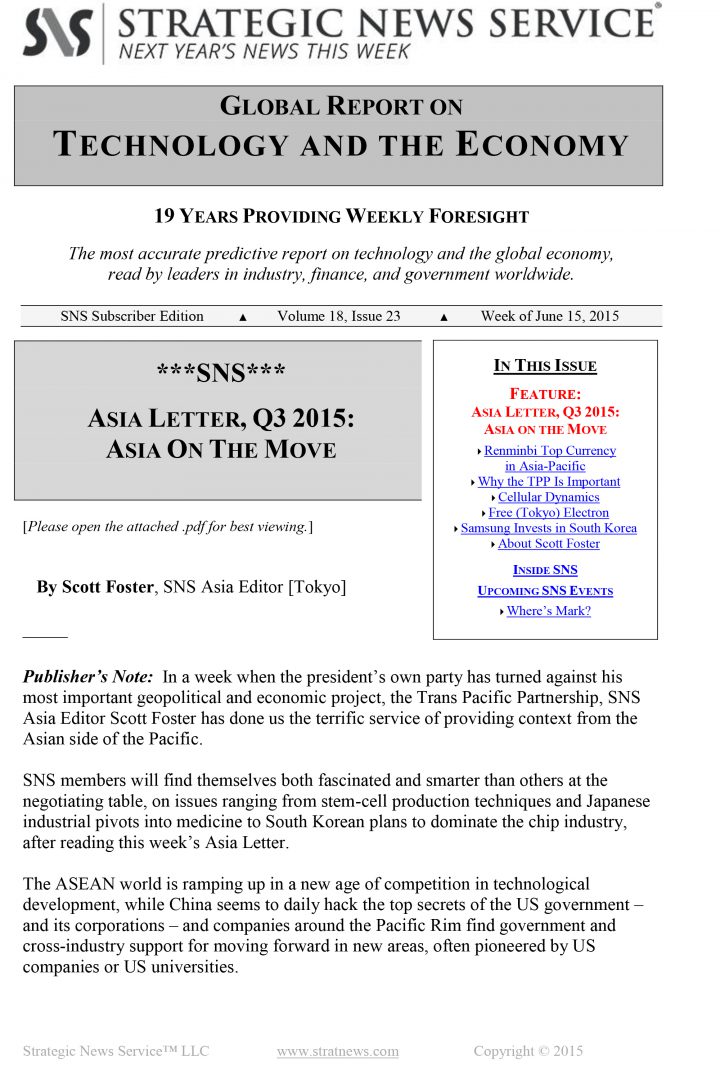- Sorry, this product cannot be purchased.
In This Issue
Week of 08/20/2018
Vol. 23 Issue 28
SNS: The Eye-Brain Machine: Computing’s Next Model?
A Fire Conversation With Bryan William Jones
Hosted by Mark Anderson
- About Bryan William Jones
—
“Mark Anderson: Good to see you.
Bryan William Jones: Thank you.
Anderson: I met Bryan recently through Chris Johnson, and it was a natural flow of conversation from the things that you saw already this morning, so you’re having the same flow here onstage as we’ve experienced in real life, if that’s a comparison – [smiling] we’ve been in real life this morning. And we had this kind of incredible conversation on the phone.
Jones: Yes. That was good.
Anderson: The reason that Chris recommended me to Bryan is that Bryan is a world expert in the eye–brain story. What is the eye–brain connection? It’s called a retina. And how does it work? And what kind of processing happens there?
Bryan knows a lot about this. So, welcome.
Jones: Thank you.
Anderson: This is a not-accidental step toward trying to help our [attendees] this afternoon understand more and more about the various ways of coming at the question of how to create a new computing paradigm, which we’re calling “pictorial processing.”
Jones: Right.
Anderson: Let’s start with the simple things, because there are probably a lot of folks in this audience who don’t have any idea what we’re going to be doing up here.
Jones: Right.
Anderson: Why the retina? What’s interesting about the retina? Describe it as an eye–brain thing for me.
Jones: So, most of us have retinas. How many people in the room are visually impaired? Anybody? AMD, retinitis pigmentosa, cataracts? A couple of people. This is pretty good.
Eventually, if we get old enough, we’ll all have visual deficits. We get used to sort of navigating our world visually. But what does “visually” mean? We have these sensors at the backs of our eyes that we take in information with, and these sensors – a lot of people like to describe them as cameras, but they’re not really cameras. They’re more flow processors. And they take in the information in our visual scene, and they do a lot of pre-processing for it and then split those data streams up and send them into the appropriate areas in cortex and brain.
Some of the stuff I’m going to talk about here was pioneered by my scientific mentor, Robert Mark, and a lot of the data I’m going to show comes from his lab. He’s retired this year, and he’s now growing apples for apple cider.
…”
Additional information
| Topics | |
|---|---|
| Focus Channels |
SKU: SNS-2018-08-23 - Need Help? Contact Us Leave Feedback
Categories: 2018 Issues, Back Issues
Tag: PDF Download

